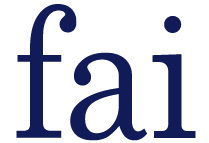We've been reading a new summary of the literature on microcredit impacts. The paperreviews technical issues using technical language, so it's not the paper I'd read first as an introduction unless you're doing a PhD in Economics or something similar.
The paper covers terrain familar from The Economics of Microfinance, 2nd edition, but offers an independent review (with a couple of helpful summary tables at the end). The paper comes to similar conclusions as Armendariz-Morduch, so there will be no surprises if you've read the book. If you haven't read the book, the paper offers a smart synthesis.
Here's my summary of the state of play: After 30 years of microcredit and the rise of randomized trials, we still don't have an impact evaluation that is ideal yet, but we're getting closer. One big lesson on which we can all agree (or should all agree) is that flawed evaluations can be seriously misleading (due to self-selection, attrition, and non-comparable control groups). So getting the details right matters . . .
Read MoreThere’s a new report out from our friends over at Freedom from Hunger that’s worth paying attention to. The report, “Integrating microfinance and health strategies: examining the evidence to inform policy and practice,” takes a look at the small but growing number of studies that attempt to show that MFIs are capable of contributing to health improvement by increasing knowledge that leads to behavioral changes, and by enhancing access to health services through addressing financial, geographic and other barriers. It concludes that while “more rigorous research is needed to inform policy and guide program implementation to integrate microfinance and health interventions…the microfinance sector offers an underutilized opportunity for delivery of health-related services to many hard-to-reach populations.” I couldn’t agree more.
Too often we find ourselves operating in development “silos,” with health advocates talking mainly to other health advocates, and conversations about financial inclusion conversations happening only in finance circles. But the fact is that for poor households, access to the right financial services at the right moment is often the key to solving other problems, like paying for health care or sending children to school . . .
Read MoreA new report on financial diaries from Malawi has just been released by Microfinance Opportunities, the IRIS Center, and the Bill & Melinda Gates Foundation. The “Malawi Financial Diaries” specifically looks at the introduction of a mobile “bank on wheels” branch of Opportunity International Bank of Malawi (OIBM), and provides an analysis of whether it added value to customers in rural locations in Central Malawi. Like some of our own work looking at the financial lives of the poor, the report provides some unexpected insights (as well as a few that are consonant with our own research) into how low-income families in Malawi manage their money.
The study found that banks and individual cash transfers dominated the financial service market—banks captured the “big money,” while individual cash transfers helped mediate day-to-day needs. Use of the OIBM van dropped off over time, though research found that several factors unrelated to the bank may have been at work here.
On the topic of risk management, cash flow was (unsurprisingly) unsteady . . .
Read MoreFAI Insights: What is rigorous impact evaluation and why is it important? Michael Clemens, Senior Fellow at the Center for Global Development (CGD) and visiting scholar at the Financial Access Initiative and at New York Univesrsity (NYU) Wagner and the NYU Dept. of Economics (Spring 2011), talks about the findings from his research into the UN Millennium Villages . . .
Read MoreBhagwan Chowdhry is Professor of Finance at UCLA Anderson and the founder ofFinancial Access at Birth or FAB (housed at the Center for Financial Inclusion). His big idea is to create a fund that would give every child born in the world $100 in a savings account that will be opened when his or her birth is officially registered. Can $100 cure world poverty?
Read MoreA new paper from the World Bank explores what we know about how women weather economic shocks. Here’s the main result:
In the past, women from low-income households have typically entered the labor force, while women from high-income households have often exited the labor market in response to economic crises. Evidence also suggests that women defer fertility during economic crises and that child schooling and child survival are adversely affected, mainly in low-income countries, with girls suffering more adverse health effects than boys.
Papers like this can go a long way toward providing the foundation for the case for insurance. It has nothing to do with insurance per see—just about the inability to cope with risk . . .
Read MoreA previous post introduced projects that focus on ultra-poor households, in Bangladesh and India. The post ended with a promise to share the results of the impact evaluation of the project implemented by SKS in Andhra Pradesh, India. The results I share here are preliminary. Additional data and finer analyses are on the way, but I wanted to deliver on that promise.
In a nutshell, the Targeting the Ultra-Poor (TUP) projects being implemented around the world are an attempt to reach destitute households, who are often too poor to participate in microfinance, and help them create a sustainable livelihood based on a modest economic activity. Participants receive food, free health care, training, savings help, and assets (a cow, a few goats, working capital to start a small business) over a period of 18 to 24 months. The programs are not microfinance programs, both because of the population that they target and the activities that they include. Their main goal is to attack ultra-poverty holistically, although they also aim to help successful participants take advantage of microfinance . . .
Read MoreMuhammad Yunus has sparked a new round of debate. In a January 15, 2011 New York Times opinion piece, "Sacrificing Microcredit for Megaprofits," the Nobel Peace Prize winner and founder of the Grameen Bank assails microfinance institutions seeking profit, likening them to the moneylenders he had meant to stamp out. Going a step further, Yunus calls for stricter government regulation to cap interest rates and protect the poor.
Yunus’s arguments take a swipe at mainstream orthodoxy within microfinance. Dogma these days holds that interest rate caps should be resisted, and profit should be pursued in the bid to attract outside investors . . .
Read MoreOne of the main lessons of recent financial diaries research is that low income often means erratic income. If you live on $2 a day, you don’t get two bucks each morning—you might make money at the beginning of the month and then not see another paycheck until weeks later. Unskilled, informal sector jobs come and go, and health problems add to uncertainties. As a result, one of the key financial challenges of poor households is to budget volatile income over long stretches of time.
That theme has also been popping up quite a bit in FAI’s nascent exploration of the financial lives of low-income U.S. households. Partly that’s because the Great Recession set off a wave of think tank research about income volatility. Last summer the Rockefeller Foundation launched an “economic security index” to track the number of households experiencing a major loss of income (defined as 25% of more) over the course of a year. The Urban Institute has been publishing an entire series of reports as a part of its “Risk and Low-Income Working Families” research initiative.
But the conversation stretches back much further . . .
Read MoreMicrocredit started with a simple financial product – the idea of group lending. Since then, much work onfinancial inclusion revolved around refining products. The field has made a lot of progress, but there is still much to do: structuring products that address poor people’s real needs, packaging them with rewards they value, reminders they find useful, and constraints that help them maintain discipline. Moreover, these products need to permit transactions that are sized and timed in a way that is consistent with their cash flows.
But better products mean nothing if they can’t be delivered to customers. The biggest challenge is how to offer products in a way that customers find relevant and convenient, reliably. Access costs on the customer side (in the form of trips to distant branches, long queues once there) or channel costs on the provider side (centered on the fixed costs of building, staffing and maintaining branches) often conspire to obliterate the economics of new products and hence dampen product innovation . . .
Read MoreTen years ago, “The Microfinance Schism” was published in World Development(vol. 28, no. 4, 2000). I had become frustrated sitting in meeting after meeting, especially in Washington, with people talking past each other. Some took the view that microfinance should be first and foremost a social intervention. Others argued that it should be profit-driven. Many argued that you could achieve both goals without making trade-offs. No one had good evidence, and few had a strong conceptual frame.
It’s a debate that hasn’t gone away. In fact, the debate has become more rancorous, especially given the current tensions in South India following the SKS IPO. Muhammad Yunus and Vikram Akula are the current combatants.
“The Microfinance Schism” parsed the arguments and aimed to show the true nature of divides. Here’s the abstract
Read MoreRich Rosenberg blogged yesterday about an Atlantic article that profiled John Ioannidis’s critique of medical research. The article reminded me of a meeting held in Washington a few years ago. Consumers and producers of microfinance impact studies were brought together to discuss the research agenda. One participant, who is not a researcher, concluded dolefully that microfinance research lags far behind medical research.
My immediate thought was that that claim was probably false: not because microfinance research is so far ahead, but because much medical research seems full of problems. If you read beyond the newspaper headlines, it’s usual to see simple correlations between health conditions and a given diet/activity/lifestyle quickly – and falsely — assumed to be causally determined. Sample sizes are small. Lots of hypotheses get tested, but just a few get published.
According to Ioannidis, it doesn’t get better when you scour the academic medical literature . . .
Read MoreIf you're interested in microfinance, but don't necessarily want to learn about graphs, econometric equations and statistical techniques then you have come to the right place.Kiva and FAI are partnering to bring you "101" blog posts that explain the core principles of microfinance.
This week's blog is a basic introduction to the subject of microinsurance. Check out our past 101 blogs on microfinance, microcredit, and microsavings.
Microinsurance is a financial tool that helps low-income households mitigate risk and plan for the future. It enables them to cope with unpredictable and irregular incomes, while also preparing them for financial emergencies that threaten their livelihood. One of the major problems faced by many households is that due to low and unpredictable incomes, they lack a financial cushion. Living so close to the margin means that it doesn’t take much to push a family into destitution. For many people an unexpected trip to the doctor or a bad harvest can quickly become a catastrophe. Microinsurance offers a way for households tomanage risk and deal with the ups and downs of life . . .
Read MoreYesterday we tweeted a chapter-by-chapter review of Vikram Akula's new book, A Fistful of Rice: My Unexpected Quest to End Poverty. In case you missed them onTwitter, here is the full review for you, tweet by tweet . . .
Read MoreWhen we think about poor people and the role that microfinance plays in their lives we tend to think of microcredit, or small loans. But there’s another financial service that is as equally important to the poor: savings. You might be surprised those who earn so little are able to save, but they can, and they do.
What are microsavings?
Microsavings is a subset of microfinance, and refers to ways “unbanked” individuals (those traditionally excluded from formal financial services) can accumulate useful sums of money. It might be difficult to believe that people who live on small incomes have anything left over to put away. But it turns out that even households with meager sources of income highly value having a safe place to save and accumulate money – and will go to great lengths to do so. But saving isn't always easy. Because the sums accumulated are small, it takes time for a useful sum of money to be built. As a result, other pressing needs may take precedence over savings, making it difficult to accumulate a usefully large sum . . .
Read MoreAt FAI, we spend most of our time thinking about financial access overseas. Yet, increasingly, we can’t ignore the conversation happening right here in the U.S. Last year, the FDIC released its first-ever survey of un- and under-banked households, which revealed that some 9 million American families have neither a savings nor a checking account, and an additional 21 million families that do have such accounts also patronize non-bank financial outfits such as check cashers and payday lenders.
Households operating outside the financial mainstream are nothing new, but the attention they are receiving certainly is. The past few years have seen a rush of interest from policy makers, socially minded nonprofits, financial educators, journalists, and even big banks hoping to add to their retail ranks. Conversations about the unbanked tend to revolve around two main premises. First, that the reason people don’t have bank accounts is because they don’t realize they’d be better off if they did. Second, that the host of financial firms people use in lieu of banks—such as check cashers, pawnshops, payday lenders, rent-to-own stores, and tax refund advance outfits—exploit customers with higher-than-warranted interest rates and wind up trapping people in a cycle of debt.
Read MoreThis is a guest post from Aparna Dalal, independent consultant and former FAI Director of Special Projects.
A new briefing note by the Microinsurance Network’s Insurance Education Working Group (of which FAI is a member) outlines emerging practices in risk management and insurance education. The note, targeted at practitioners, outlines basic principles that practitioners should incorporate into their education programs such as:
1. focusing on risk management and insurance content;
2. relating education to people’s risk exposure;
3. using a mix of channels and tools;
4. delivering ongoing education as opposed to one-time programs;
5. linking education with products;
6. leveraging existing institutions and pool resources; and
7. incorporating monitoring and evaluation activities from the start.
Read MoreWhat do Jack the Ripper, the shortage of affordable housing, and cataracts have in common? They are all problems that can and have been addressed by social finance. Jonathan Morduch recently shared his wisdom on the subject during the Chief Economist Talk series at the World Bank.
Read MoreRecently there has been a lot of talk within the industry about the commercialization of microfinance institutions. In 2008 the wildly successful IPO of Mexico’s Banco Compartamos demonstrated that the microfinance industry can yield massive profits and is worthy of private investment. But it also raised questions about whether such financial success is reason for concern, whether microfinance is in danger of mission drift, and if operating on a for-profit basis is in the best interest of the poor households microfinance claims to help.
To understand the implications and concerns regarding commercialization, it is essential to first appreciate the different types of microfinance providers: banks, for-profit NGOs, and non-profit, NGOs. From an economic standpoint the most significant difference among the various providers, is that commercialized entities (banks and for-profit MFIs) are able to distribute profits as they like after taxes. Non-commercialized MFIs (non-profit MFIs), must reinvest profits back into their organization. The MFIs also differ in regard to mission, clientele, services offered and regulation requirements they must meet. Banks are subject to stricter regulations and make loans that on average are about four times larger than loans from NGOs. Since poorer customers generally demand smaller loans, average loan size is a rough proxy for the poverty level of customers. On average, microfinance banks thus tend to serve a substantially better-off group of borrowers than do NGOs. Banks also serve fewer women as a share of their customers. For-profit NGOs have a very similar profile to banks, but are not subject to the same rigorous regulation and tend to be less profitable . . .
Read MoreCould you live on $1 a day? In New York City, probably not. What about in rural Guatemala? Inspired by The Portfolios of the Poor, four American college students attempted to do just that. They spent nine weeks living and working in a rural Guatemalan village. Their goal? To understand and document how the world's poor, quite literally, live on a dollar a day.
Their first step was to try to replicate the living conditions of poor farmers by taking a microfinance loan of $300, using it to rent a plot of land on which they grew crops to repay the loan installments. And these guys did their homework . . .
Read More


